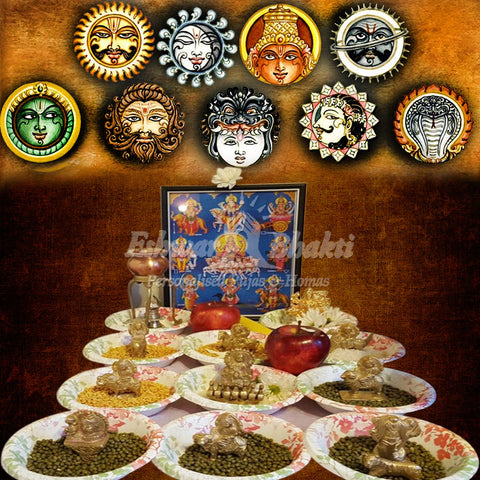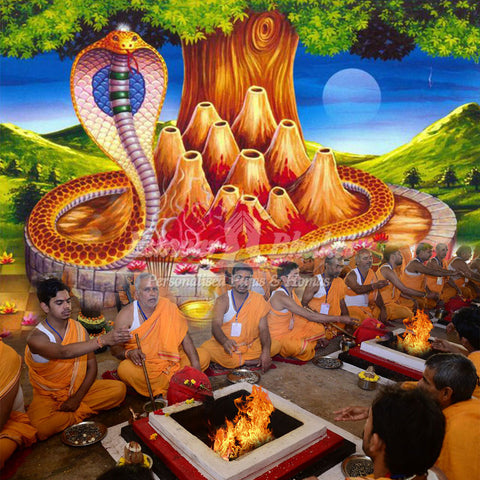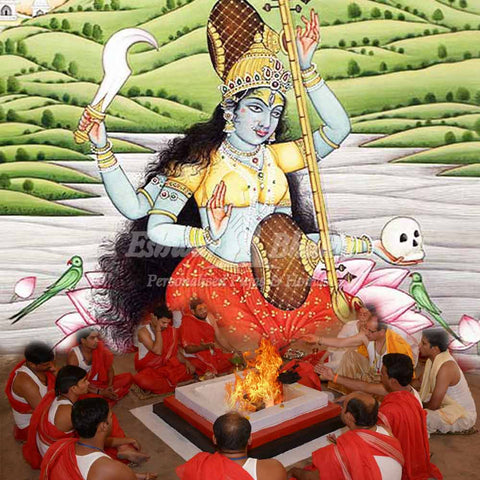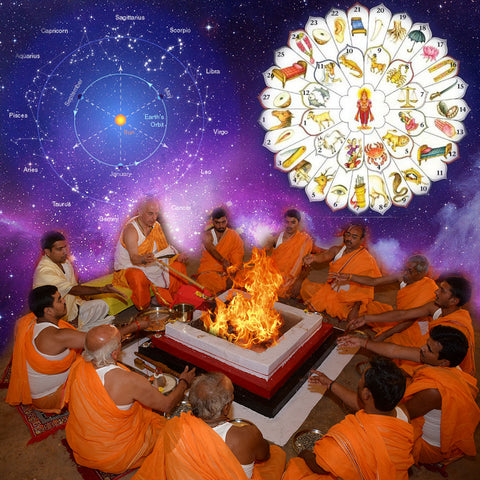What is Mauli thread?
 Mauli or Kalava threads are profound symbols of identity in Hinduism. Etymologically, Mauli is a Sanskrit word, which means crown or above all. In Hindu tradition. Lord Shiva is known as ChandraMauli because He has a crescent moon on His matted head.
Mauli or Kalava threads are profound symbols of identity in Hinduism. Etymologically, Mauli is a Sanskrit word, which means crown or above all. In Hindu tradition. Lord Shiva is known as ChandraMauli because He has a crescent moon on His matted head.
In India, Mauli threads have different names in diverse cultures. They are known as Kalava, Rakshasutra, Mouri, Kautuka, and Charadu. They are sanctified and made from cotton yarns.
Maulis are mostly a combination of red and yellow threads. Red is a representation of long life and protection against evil forces. It also has the property to stimulate the spiritual energy conveyed by the yellow thread.
How to tie Mauli threads?: Usually, an elder member of a family or the priest ties the Mauli before or after a religious ceremony. It is essential to spin the thread seven times before tying it on the wrist. A devotee would offer Mauli to a deity to enhance its positive energy and to ward off any evil forces. A priest or an elderly would tie the Mauli with three knots on the devotee's wrist with the palm facing up.
Mantra for tying Mauli: "Om yina baddho balee rajaa, daana vendro mahaa balah tenatvaa mahibadhn aami raksha maachala maachala." The holy person would tie the knots by chanting the mantra to invoke our Sattvik state and also to enhance positivity. Its recitation provides the devotee with protection, health, and prosperity.
The day of tying a Mauli is also an essential factor. You can do it on a Saturday, Tuesday, and also on festive occasions. Another important factor related to Mauli is, men and young girls tie them on their right wrist and married women on their left wrist.
Why do men wear Mauli on their right wrist and women on their left wrist?
In Hinduism, Ardhanarishwhara is a composite image of Lord Shiva and Parvathi. Lord Shiva is on the right side, and Parvathi Devi is on the left side of Ardhanarishwara. Here, Shiva and Parvathi are the representations of Purusha and Prakriti (the universal protective shields). Men wear Mauli threads on their right wrist, and women on their left, to invoke the protective powers of Purusha and Prakriti. Similarly, in Hindu temples, the idols of God are on the right side and that of Goddesses on the left side.
The significance of wearing Mauli threads: Mauli is an auspicious symbol that can purify and sanctify a person. There are several religious and scientific significances of wearing a Mauli thread. Akin to other religious rituals in Hinduism, Mauli is an essential factor in conveying our faith and belief in the religion. Here we will be discussing the different significances associated with the wearing of a Mauli thread and their connection with the ancient scriptures and texts.
Religious Significance: Mauli threads have a lot of religious significances. They are known to ward off negative energy, dangers, and diseases. They aid us in receiving blessings from the deity and enhance our lives with positivity. Mauli threads are also known as Rakhi. Sisters tie them on the wrists of their brothers as a knot of love and protection. It is commonly known as Raksha Bandhan.
Let us look into other religious and mythological references for tying a Mauli.
• Lord Vishnu in his Avatara as Vamana tied Mauli on the right wrist of King Bali before Vamana sent him to the nether world. He tied Mauli to grant King Bali immortality. Devotees tie Mauli threads based on the tradition to gain long life and health.
• In Mahabharata, Kunti Devi tied Mauli on the right wrist of Abhimanyu to protect him. He was undefeated until he had Mauli on his wrist. It was only when a rat, sent by Lord Krishna, cut off the thread that Abhimanyu fell in the war.
• In Atharvaveda Samhita (section 2.11), Mauli is a ritual thread of great significance.
• Mauli threads are known to invoke Trideva and Tridevi. The Tridevas are Brahma, Vishnu, and Maheshwara. The Tridevas are Lakshmi, Saraswathi, and Durga Devi. Brahma Deva offers us fame. Lord Vishu will provide us with the blessings to evade evil powers. Lord Shiva or Maheshwara gives us the ability to remove negativity. Saraswathi Devi presents us with knowledge and wisdom. Lakshmi Devi grants us prosperity and wealth. Durga Devi is known to give us the power to overcome the hurdles of life. So by tying a Mauli thread on our wrist, we can invoke the blessings of the deities in our lives as well.
• When we tie Mauli on Anant Chaturdashi, it is auspicious and is known to bring happiness, prosperity, and health.
Scientific Significance: Mauli threads have scientific benefits as well. Tying them on the wrist can have many health-based benefits in our lives. In Ayurveda, there are three doshas or faults in our body known as the Tridoshas. They include Vatta, Pitta, and Kapha. Vatta provides impulses in mobilizing our nervous system. Pitta is useful in digestion, which aids in supplying blood to different parts of our body. Kapha carries nutrients to the arterial system. The instability of these doshas can harm our bodies.
Our body has around seventy-two thousand nerves, and almost all the essential nerves pass through our wrist. So, we can cure the imbalances in Vatta, Pitta, and Kapha by focusing on the veins in our wrist. The application of some weight on our wrist can aid in activating the nervous system. When we tie a Mauli thread to our wrist, it provides balance to our doshas and also enhances blood circulation in our bodies. They can also reduce the chances of confronting diseases like diabetes, paralysis, and heart diseases.
The tying of Mauli threads, thus, can improve positivity, health, prosperity, happiness, and our overall wellbeing. They have an important place in Hindu traditions and rituals. They can invoke the blessings of the deity and enhance our lives with sanctity and purity.





Comments
very useful literature.
Thank You.